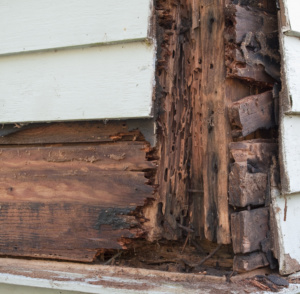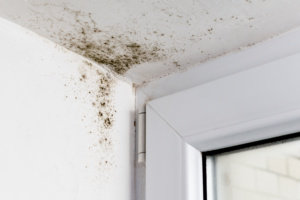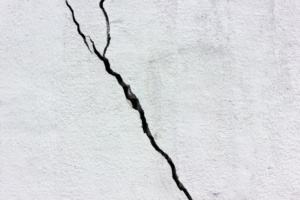6 Most Expensive Home Buying Mistakes
Article by | Tom Kraeutler, The Money Pit
Finding your dream home after months of hunting, touring, and negotiating can be exciting, and such a huge relief that you can’t wait to sign on the dotted line. But not so fast — it’s what you can’t see that can cost you big bucks when buying a home. Perfect interiors and seemingly sturdy construction can hide major issues that are costly to correct.
This is where a qualified home inspector comes in. Today’s home purchase contracts usually include a home inspection contingency clause, allowing the buyer to bring a home inspector on board to thoroughly inspect the property. During this two- to three-hour process, the home inspector will check every nook and cranny of a property’s exterior and interior, as well as review critical home systems. It’s all for your benefit, providing you with the necessary third-party assessment and facts to make an informed purchase decision.
“The bottom line is that you need to know what you’re buying,” says Charles Furlough, vice president of Pillar to Post, a professional home inspection company serving the U.S. and Canada. “And the intention during that inspection is to educate the buyer on the condition of the home that they’re about to purchase.”
Following are hazards that may be uncovered by your home inspection, calling for a return to the negotiation table.
Termites and other live-in pests
The home you’ve fallen in love with may also be a favorite for the local termite population, who could be munching away at critical structural components and doing damage that’s expensive to repair. The sooner termites are detected, the better, and the same goes for other dangerous pests like powder post beetles and rodents.
Make sure you know what threats exist, and what needs to be done in order to prevent the return of termites and their fellow intruders.
Buying a home with basement or crawlspace leaks
Poor drainage can lead to a host of pricey problems, including wood rot, damp or wet basements, perennially wet crawlspaces and major mold growth. It all starts on the roof of a home, where rainwater is directed – or not – into a system of gutters and downspouts that should carry water well away from the structure.
Proper grading at the property’s ground level completes the drainage scheme, and correcting grading and gutters is a lot less costly than undoing damage caused by the accumulation of moisture.
Toxic mold taking hold
Where moisture collects, so grows mold, a threat to human health as well as to a home’s structure. Buying a home with mold problems can be one that is very costly to correct.
Improper ventilation can be the culprit in smaller, more contained instances of mold (as in a bathroom with mold problems), but think twice about buying a property where mold is pervasive because of long-term moisture issues. Says Furlough, “When mold is in a specific location, it’s relatively easy to clean and get rid of. But when it’s just all over, that can be very difficult to deal with.”
Buying a home with a faulty foundation
A cracked or crumbling foundation will call for attention and repair, with costs ranging from moderate to critically expensive. The topper of foundation expenses is the foundation that needs to be replaced altogether, so be ready for this possibility if you insist on shopping “historic” properties. Those beautiful details and built-ins may come with an epic underlying expense.
Roofing regrets!
The roof soon to be over your head likely will have its own set of care requirements, so enter any sale agreement with an awareness of your own cost tolerance for roof repair versus replacement. The age and type of roofing material used will figure into your home inspector’s findings, as well as the price tag of repair or replacement. An older home still sheltered by asbestos roofing material, for example, requires costly disposal processes to prevent release of and exposure to its dangerous contents.
Toxic materials
Buying a home with asbestos insulation or siding can be costly to correct.
Asbestos may be elsewhere in a home’s finishes, calling for your consideration of containment and replacement costs. Other expensive finish issues include lead paint and, more recently, Chinese drywall, which found its way into homes built during the boom years of 2004 and 2005. This product’s sulfur off-gassing leads to illness as well as damage to home systems, so you’ll need to have it completely removed and replaced if it’s found in the home you’re hoping to buy.
Your home inspection results will also cover everything that’s right with a property, so be ready to weigh the pros and cons and negotiate for correction of larger issues if it makes sense for the sale price and overall investment. That’s why a home inspection is a critical step when buying a home.
“Generally speaking, I think the thing for home buyers to keep in mind – and even sellers, for that matter – is that issues that are found in a home inspection really should all be converted to dollars,” advises Furlough. “Because there are very few, if any, problems with a home that cannot be repaired.”
Know in advance what repairs you may need in a house you’re about to buy. Hire a home inspector and uncover any hidden hazards.
Editor’s Note: Tom Kraeutler hosts the nationally syndicated radio show “The Money Pit”, carried right here on WTAW NewsTalk 1620 (Saturday, 7-9 A.M.). Listeners are invited to ask home improvement questions at anytime by calling the show’s 24-hour toll-free hotline at 1-888-MONEY-PIT. Questions will be responded to in their next regularly scheduled broadcast. For more great home improvement tips, guides, and advice, visit the show’s website at www.moneypit.com. Copyright 2021 Squeaky Door Productions, Inc. All Rights Reserved



